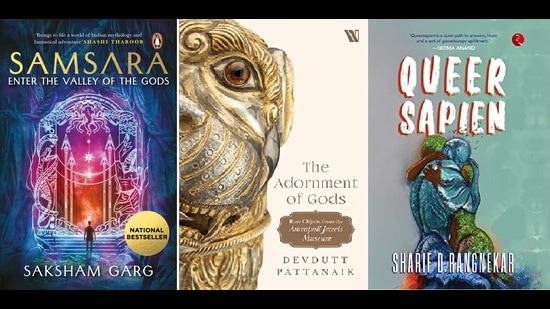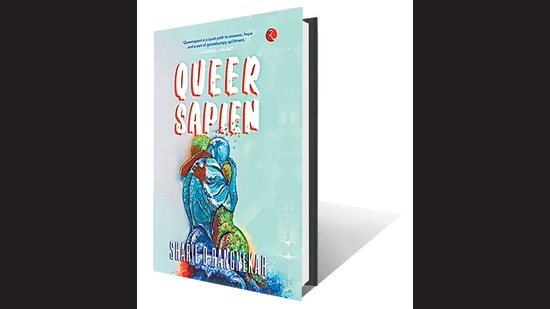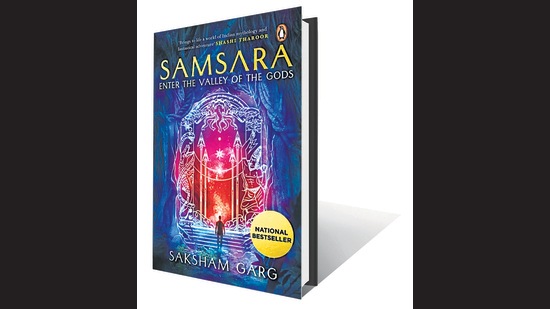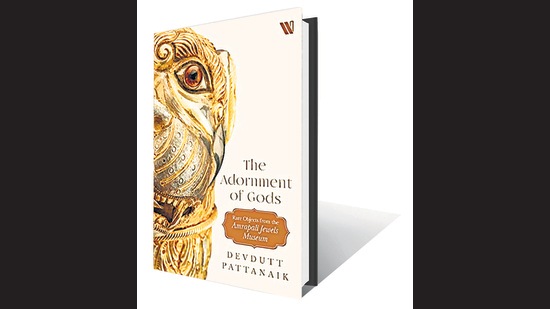HT Picks; New Reads
The reading list this week includes a volume that presents 50 rare and exquisite antiques from the Amrapali Jewels Museum, a book that recognizes and stresses that there are many ways to live, and a mythological fantasy novel with a powerful twist in the ending
Recognising that there are many ways to live


Is queer “only” about sexuality? or is it a state of existence?
In its truest form, nature is queer and queer is free. Nature is queer when water takes the form of oceans, lakes, rivers, rain, snow, steam, dew and every other avatar it chooses and expresses itself through. It’s queer when the soil takes the shape of a hill or a mountain or a ravine. Queer is when one tree doesn’t force another tree to become its clone, and every flower finds a place under the sun. Queerness lies in the consciousness that if left free, everyone becomes more rooted in their existence and stronger in their individuality.
Queersapien is neither an individual’s search for identity, nor is it a lamentation of societal prejudices. The book recognizes the fact that there are many ways to live. A queer mind sees itself as part of the extreme diversity nature offers. It is, therefore, aware that if we shed the veneers we wear and the blinkers we view life with, we’d know there isn’t a solitary kind of food or form to clothing, history, education and wisdom. There isn’t a singular structure to a family, a union or one way to love or one normal.
In what is a searing and raw reflection on life, media, neoliberalism, politics and the inner self, Sharif D Rangnekar, who identifies as a gay man, explores through lived experiences, the meanings of love, freedom, identity and dignity in a society where family, religion, caste and class dictate how we live our lives every day. This is a book that can’t be put in a thematic box, much like queerness. Becoming queersapien is not a revolution but an evolution of the self, a nation and its people.*
Enter the valley of the gods

What if you came face to face with the gods?
Phones stop working. Smartwatches die. And arms start glowing with blue scars. This is what happens to Aman Chandra and 10 other Souls of Samsara when they are kidnapped from modern-day India and transported to a hidden valley in the Himalayas. In this realm of magic, home to Hindu gods, immortal yogis and mythical beasts, the mission is clear for the Souls of Samsara: to learn the ancient art of yogic sorcery and prepare for a treacherous journey not many can survive.
But why must they go on this journey? And how are the gods connected to it all?
Before they get any answers, the Souls of Samsara realize that there is a larger scheme at play. The king of the gods has passed a controversial order. And Aman must make a tough decision that will change not just his life but the fate of an entire nation . . .
Perfect for fans of Harry Potter and Immortals of Meluha, Samsara by Penguin editor-turned-author Saksham Garg is a mythological fantasy novel with a powerful twist in the ending.*
Rare objects from the Amrapali Jewels Museum

The Amrapali Jewels Museum is a fitting tribute to India’s extraordinary history, both ancient and living. From this magnificent collection, The Adornment of Gods thoughtfully curates 50 rare and exquisite antiques, with Devdutt Pattanaik narrating their stories. Each object is a small but significant part of Indian history, its motifs and materials offering a unique perspective on the country’s cultural heritage.
Most do not realise it, but religious ideas in India reached the masses through symbols and imagery inscribed on jewellery and household artefacts. Texts were accessible only to a sliver of the population, the educated elite: the rest relied on ornaments and objects. Devdutt Pattanaik has written on mythology as revealed in texts, but this is the first time he has had the opportunity to explore how religion reaches the home through ritual objects.
These objects currently at the Amrapali Jewels Museum would have sparked conversations within the family, enabling the transmission of sublime concepts.
They are rare for more reasons than one, for this is how ideas reached the farthest corners of the land over hundreds of years. This book is an opportunity to showcase these overlooked mediums of Indian wisdom.*
*All copy from book flap.





